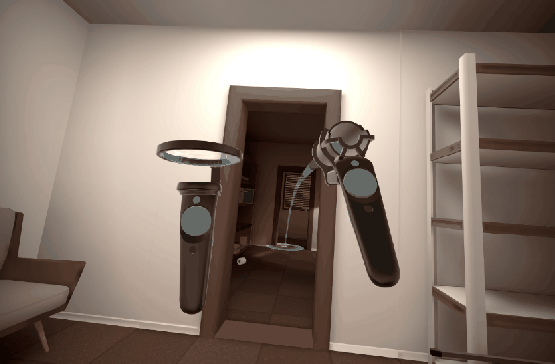
Next: Wayfinding Up: 10.2 Locomotion Previous: Specialized hardware Contents Index
The locomotion methods covered so far have mainly focused on reproducing experiences that are familiar in the real world, which provide instances of the universal simulation principle. In VR, however, we could also move in ways that are physical implausible. The most common is teleportation, which it works like a transporter in the TV series Star Trek. The user is immediately transported to another location.
How is the desired location determined? One simple mechanism is a virtual laser pointer (or 3D mouse), which is accomplished by the user holding a controller that is similar in shape to a laser pointer in the real world. A smart phone could even be used. The user rotates the controller to move a laser dot in the virtual world. This requires performing a ray casting operation (recall from Section 7.1) to find the nearest visible triangle, along the ray that corresponds to the laser light.
 |
To select a location where the user would prefer to stand, she could simply point the virtual laser and press a key to be instantly teleported. To make pointing at the floor easier, the beam could actually be a parabolic arc that follows gravity, similar to a stream of water; see Figure 10.9. Places that are not visible can be selected by using a pop-up map, or even performing a text-based search (voice commands could be used instead of typing). One method, called world in miniature, involves showing the user a virtual small-scale version of the environment [317]. This is effectively a 3D map.
Steven M LaValle 2020-01-06